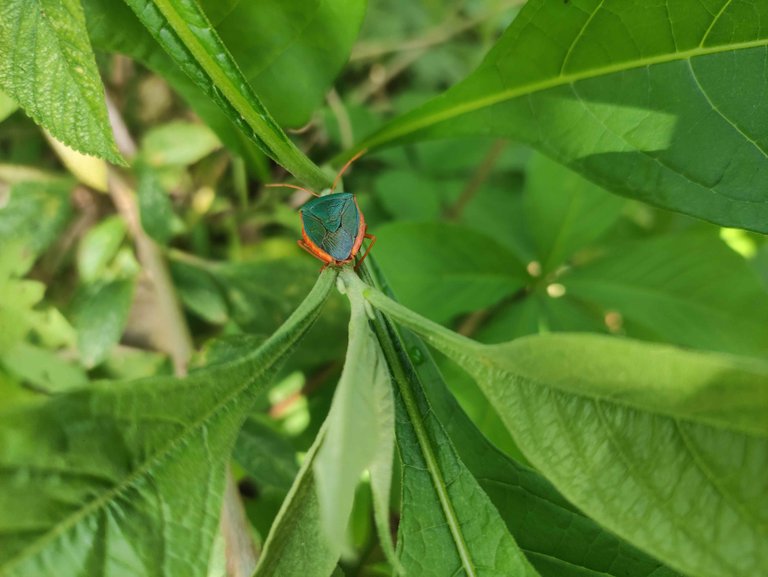
Saludos a todos, en este mes de agosto, caluroso y diferente. Ayer en la mañana salí al solar, y entre las plantas de berenjena macho (Solanum erianthum D. Don) y de toronjil (Lippia alba), pude divirsar un hermoso insecto, el cual tuve la oportunidad de fotografiar. Esta oculto en el centro de una de las plantas que ha resurgido gracias a las lluvias.
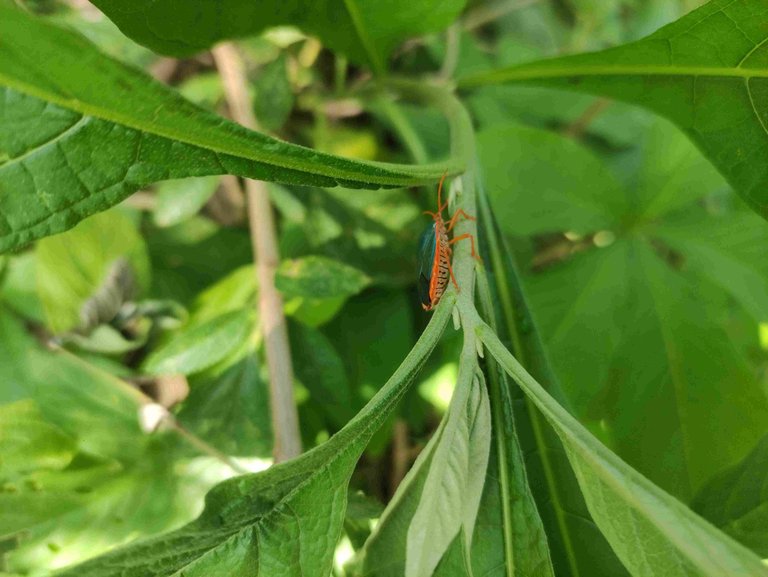
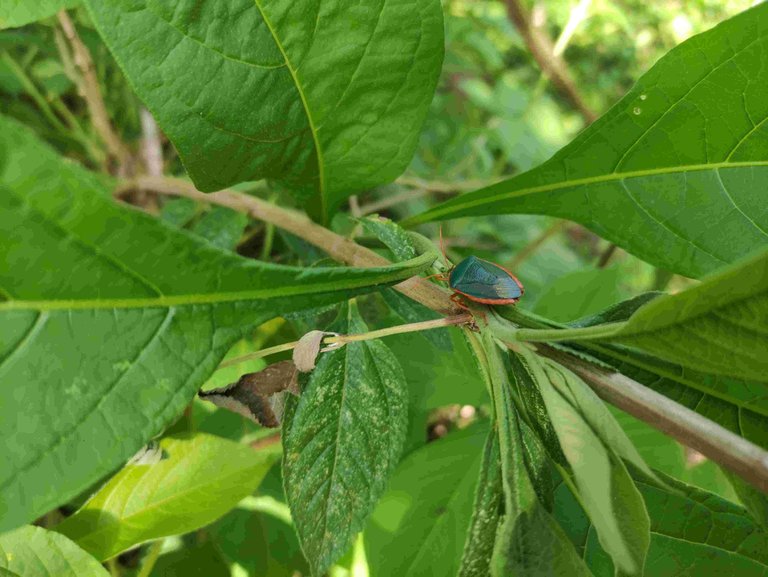

Era algo difícil de distinguirlo, ya que el color de su exoesqueleto lo mimetiza con el entorno vegetal, aunque los bordes y antenas permitían distinguirlo. Este hermoso, pero nocivo insecto (según pude conocer al investigar sobre él), se denomina Chinche de bordes rojos (Edessa rufomarginata). Es difícil diferenciar si es macho o hembra. De hecho, la literatura consultada, indica que los sexos son indiferenciables a simple vista.
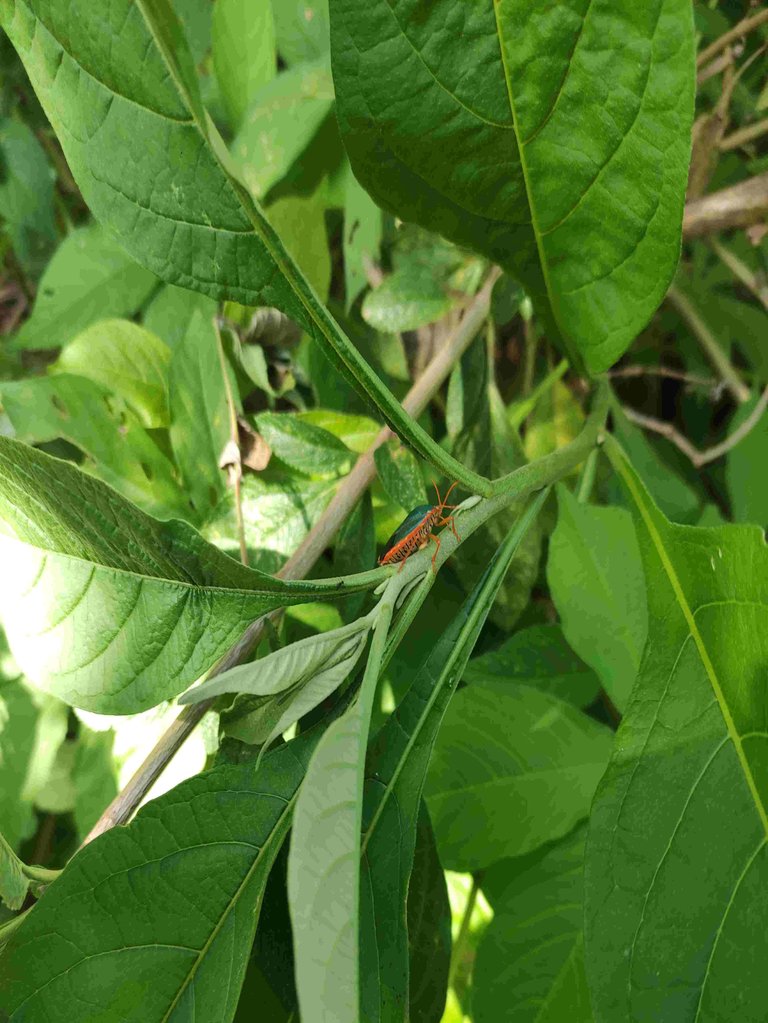
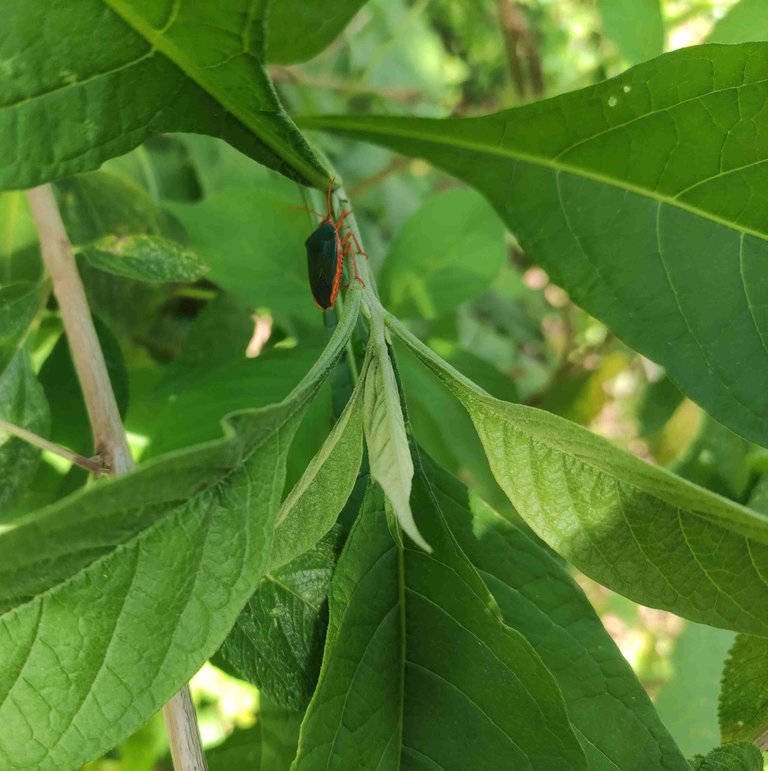

La revisión bibliográfica indica que estos insectos corresponden al orden Hemípetra, y a la familia Pentatomidae. Es una especie sin preferencias específicas en su dieta, por lo que succionan la savia de cualquier planta que presente tejidos jóvenes o tiernos. Al hacer esto, contaminan a la planta con toxinas que generan la muerte de ésta por necrosis, entonces es una especie dañina.
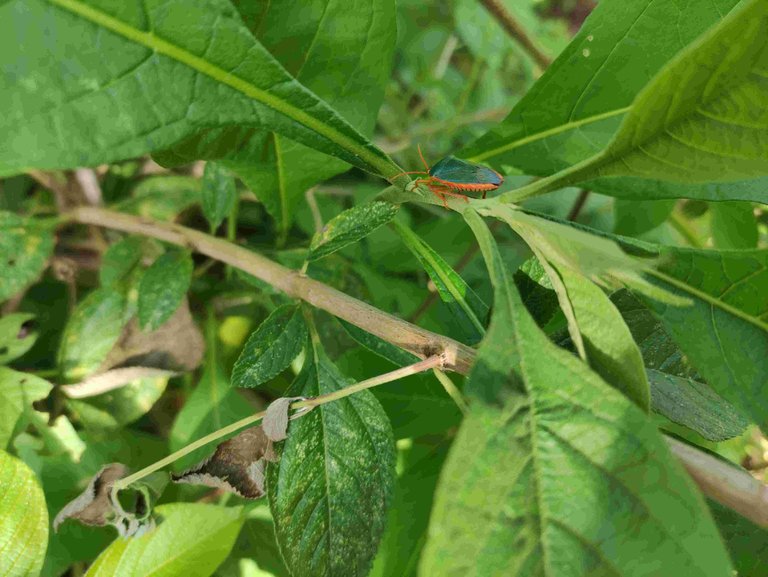
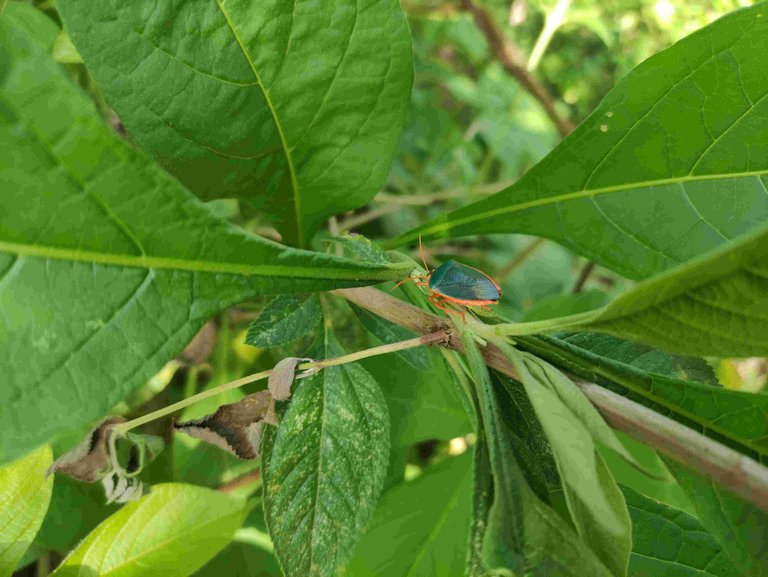

Su distribución geográfica se extiende desde México hasta Argentina, por lo que no es raro verla en mi solar, aunque creo que es la primera vez que observo este tipo de insecto, el cual es de un vibrante verde esmeralda, con unos bordes rojos, casi naranja, al igual que sus antenas. También su abdomen presenta una especie de formación en bandas, que son de este mismo color. El tamaño de este insecto es cercano a los 2 cm.

Aquí termino mi post de hoy, en el que les he compartido las imágenes de un insecto raro, colorido, pero que es una plaga para ciertos cultivos, (espero que no sea una plaga para mi solar). Me despido de ustedes y, recuerden: No todos los días son iguales y más importante aún: Todo lo que das, todo lo que haces, inexorablemente volverá a ti. ¡Abrazos!


Todo el contenido, (excepto los separadores de texto) es de mi propiedad y está sujeto a derechos de autor // All content (except text dividers) is my property and is subject to copyright.




Delegations welcome!

Posted Using InLeo Alpha
Wow that's beautiful
Hi @morentis, thanks for your visit and kind comment. Have a great week!
👏 Keep Up the good work on Hive ♦️ 👏
❤️ @mysteriousroad suggested sagarkothari88 to upvote your post ❤️
Parece un chinche jeje bueno así le decimos en los andes!! Te tocará vigilarlo a ver sino.le hace daño a tus plantas. Saludos amiguita
Hola @kyleana, sí, es un chinche, pero primera vez que veo uno así, tan verde y con esos bordecitos rojos. Espero que no le dé por picar a las plantas, a los árboles. Gracias por la visita.